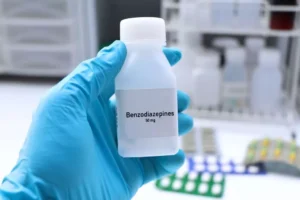This is why the trip can last so long; eight hours on average but sometimes over 16 hours. Psychedelics are powerful substances that require a responsible and informed approach. These substances are not yet widely accepted as conventional treatments. The physical environment includes surroundings where the psychedelic experience takes place. Users find that a comfortable, safe, and aesthetically pleasing environment can contribute to more positive experiences. Setting intentions for a psychedelic experience can be helpful in creating a mindful journey.

Obsessive-compulsive disorder (OCD)

For example, methadone targets specific opiate receptors to help prevent withdrawal symptoms from heroin addiction. Varenicline attaches to nicotine receptors to curb cigarette cravings. SSRIs (antidepressant meds) make more serotonin available to improve brain cell messaging. But Dolen is careful to point out that this priming is just the first step.
- Each of these drugs works in a different way to treat a particular condition.
- This can be thought of as a rewiring of the brain and is also responsible for the feelings of openness that are experienced for days (or even months) after the active psychedelic experience.
- To include a wider variety of people going forward, scientists and study sponsors will have to look for better recruitment and screening strategies, he says.
- In addition, the powerful effects of these psychedelic substances may have you wondering about their safety.
- In addition, most studies also included supportive care in the form of psychotherapy.
- Trained therapists guide individuals through the experience, and the physical environment is designed for safety, comfort, and conduciveness to introspection.
What Are Psychedelic Drugs, and How Can They Help Treat Mental Health Conditions?
- It’s unlikely that we’ll ever fully understand how psychedelics work in the brain—and that might just be half the beauty of the experience.
- Scientists have found that certain brain regions experience changes in blood flow and oxygen levels after a psychedelic is consumed.
- The most common side effects of psychedelics are shifts in mood, visual hallucinations, sensory changes (including sensitivity), perception of time, and differences in thought and perspective than what is typical for the person.
- A “no” vote opposes this initiative to provide regulated access to certain psychedelic substances and authorize the personal use of limited amounts of psychedelics by individuals 21 years of age or older.
Along with the altered perception of reality that comes with hallucinations, which may be frightening to experience, short-term side effects of psychedelics can include paranoia and psychosis. Cutting-edge therapies like psychedelic-assisted treatment and TMS are revolutionizing mental health care, offering new hope for conditions like PTSD and depression. In clinical studies using standardized treatment protocols, drug effects may last for three to six hours, during which time a therapist is always present. Each treatment session is usually followed by one or more standard therapy sessions in which the experience is discussed and integrated.

How Do Psychedelics Work in the Brain?
Hallucinogen is now, however, the most common designation in the scientific literature, although it is an inaccurate descriptor of the actual effects of these drugs. In the lay press, the term psychedelic is still the most popular and has held sway for nearly four decades. Most recently, there has been a movement in nonscientific circles to recognize the ability of these substances to provoke mystical experiences and evoke feelings of spiritual significance. Thus, the term entheogen, derived from the Greek word entheos, which means “god within”, was introduced by Ruck et al. and has seen increasing use.
Careful screening, Huang says, has led to a homogenous group that is overwhelmingly upper middle class, middle-aged, and white. The FDA hasn’t approved psilocybin or MDMA for medical uses outside of clinical trials. They are Schedule I illegal substances under the federal Controlled are psychedelics addictive Substances Act. Simple possession of them is a violation of federal law as well as laws in many states. Still, though in its infancy, there is some research that aims to uncover the particular physical changes in the brain from psychedelic drugs that help people get better.
Who supports and opposes Question 4?

Also known simply as acid, LSD was widely used in the 1960s until it was made illegal. The newly founded Harvard Study of Psychedelics in Society and Culture is an interdisciplinary effort across the Faculty of Arts and Sciences, Harvard Divinity School and Harvard Law. It seeks to “transform the psychedelics research landscape by producing… For harm-reduction purposes, we provide links to online psilocybin vendors, local stores, delivery services, and spore vendors for growing your own medicine at home. Did you know that, even after being sliced in half, neurons on both sides of the brain can still communicate with one another without direct contact?

The final sessions will focus on those objectified by colonizing practices in the psychedelic space, namely plants and animals, indigenous groups, and underground practitioners. Interestingly, when it comes to LSD, the serotonin receptors operate like a capsule. They ‘close’ when the drug reaches the brain and end up “freezing” LSD to each serotonin receptor for several days.
Potential therapeutic effects
Researchers have also found that psychedelics can increase creativity, improve mood and more. Nearly all hallucinogens are illegal, and researchers don’t consider any amount of drug use safe. The drugs can cause many adverse effects to your health and well-being.
They’re working to untangle the mechanisms behind these drugs’ properties—from their therapeutic effects to their abuse potential. By understanding how these drugs work, researchers hope to design better and safer treatments that come with all the benefits of psychedelics, and few of the downsides. This recent pivot toward psychedelic drugs has been described by some as a “psychedelic revolution” in psychiatry, if not a “miracle cure” for mental health disorders in general. But many of the basic mechanisms of these drugs remain poorly understood, in a field of medicine that has barely begun to recover from decades of government-enforced stigmatization. Classic psychedelics affect serotonin 2A receptors in the brain and the central nervous system, causing sensitivity to touch, light and sound, as well as visualizations and an altered perception of time.
Henüz yorum yapılmamış, sesinizi aşağıya ekleyin!